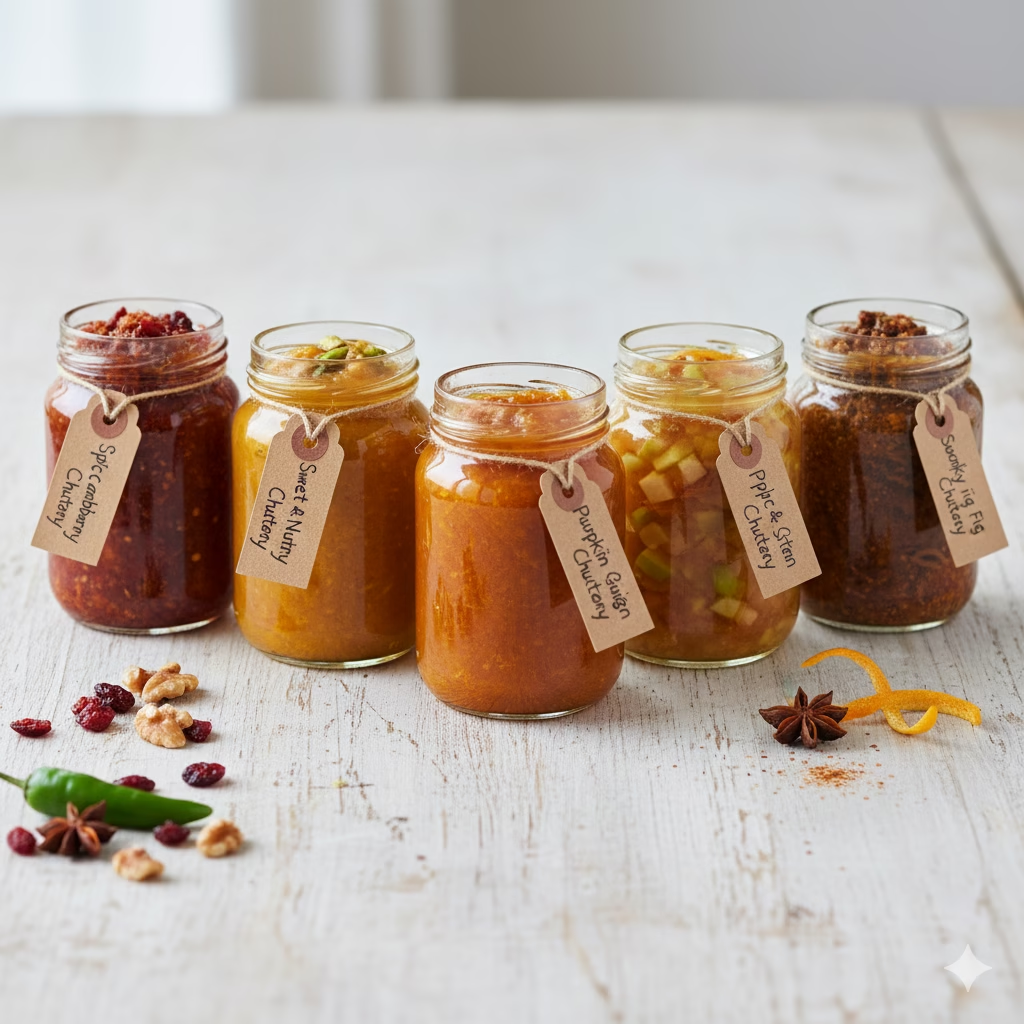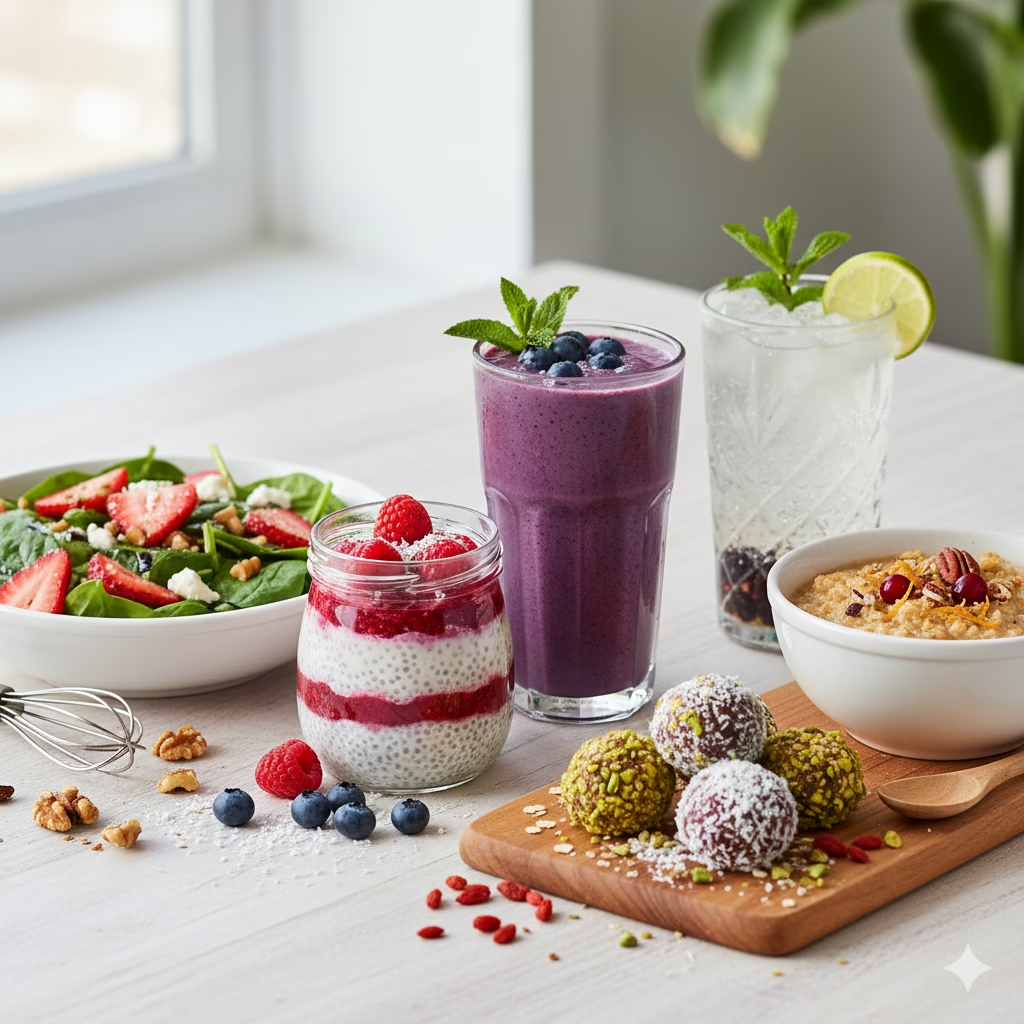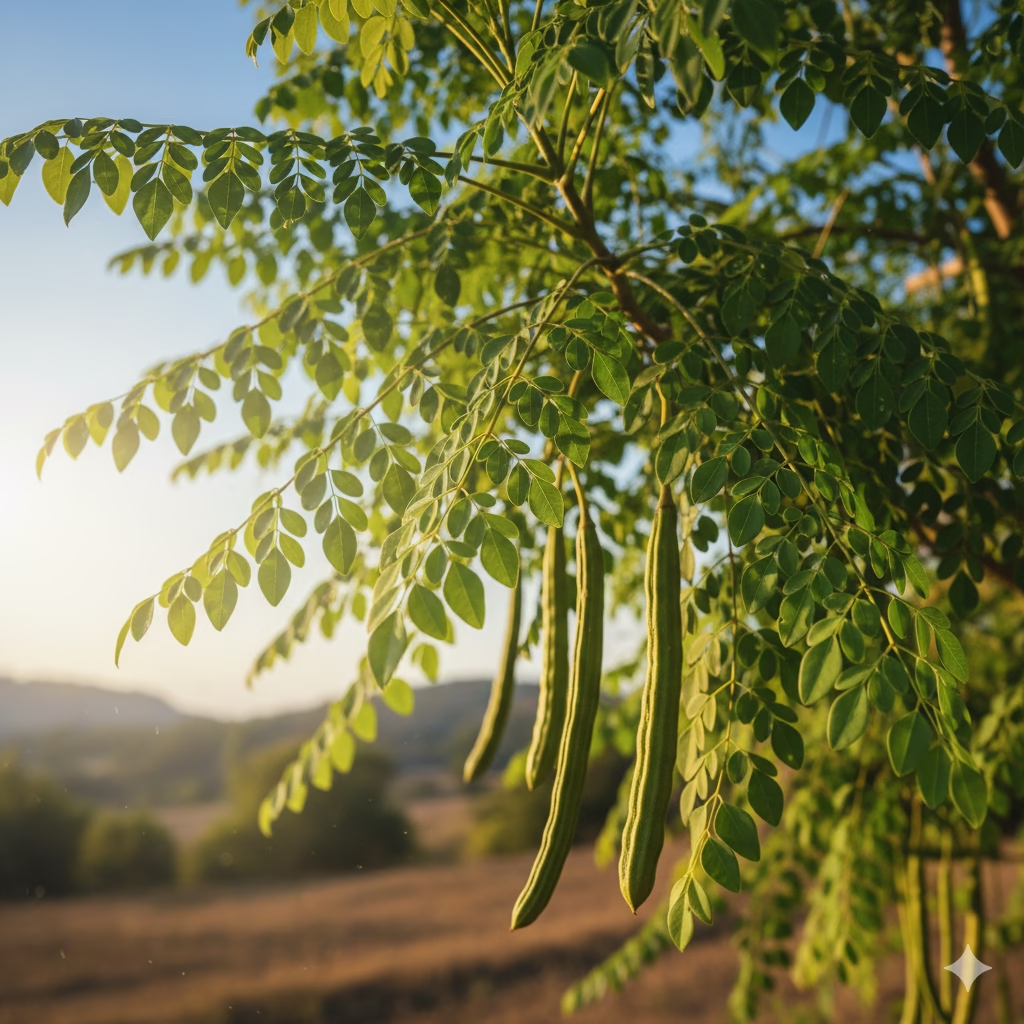
Discover the incredible versatility of moringa, a superfood packed with essential nutrients. This guide explores creative and easy ways to incorporate moringa into your daily routine, enhancing your health and well-being. Learn why moringa is celebrated globally and how you can harness its benefits.
Discovering the Miracle Tree: An Introduction to Moringa
In the world of health and wellness, some ingredients stand out as true powerhouses. Moringa is one of them, often called the “Miracle Tree.” This amazing plant comes from India and people in many cultures have loved it for centuries. Why? Because it’s packed with nutrients and offers so many health benefits. From old health traditions to today’s superfood trends, moringa’s lasting value and its ability to boost our wellness are clear.
Moringa oleifera, to use its scientific name, is much more than just a tree; it’s a complete nutritional gift. Almost every part of the plant—the leaves, pods, seeds, and flowers—is safe to eat and full of important vitamins, minerals, and antioxidants. The moringa leaves, in particular, are a treasure chest. They are very rich in Vitamin C, Vitamin A, calcium, potassium, and protein. Adding moringa to your diet is a simple and natural way to get more nutrients and support your body’s overall health.
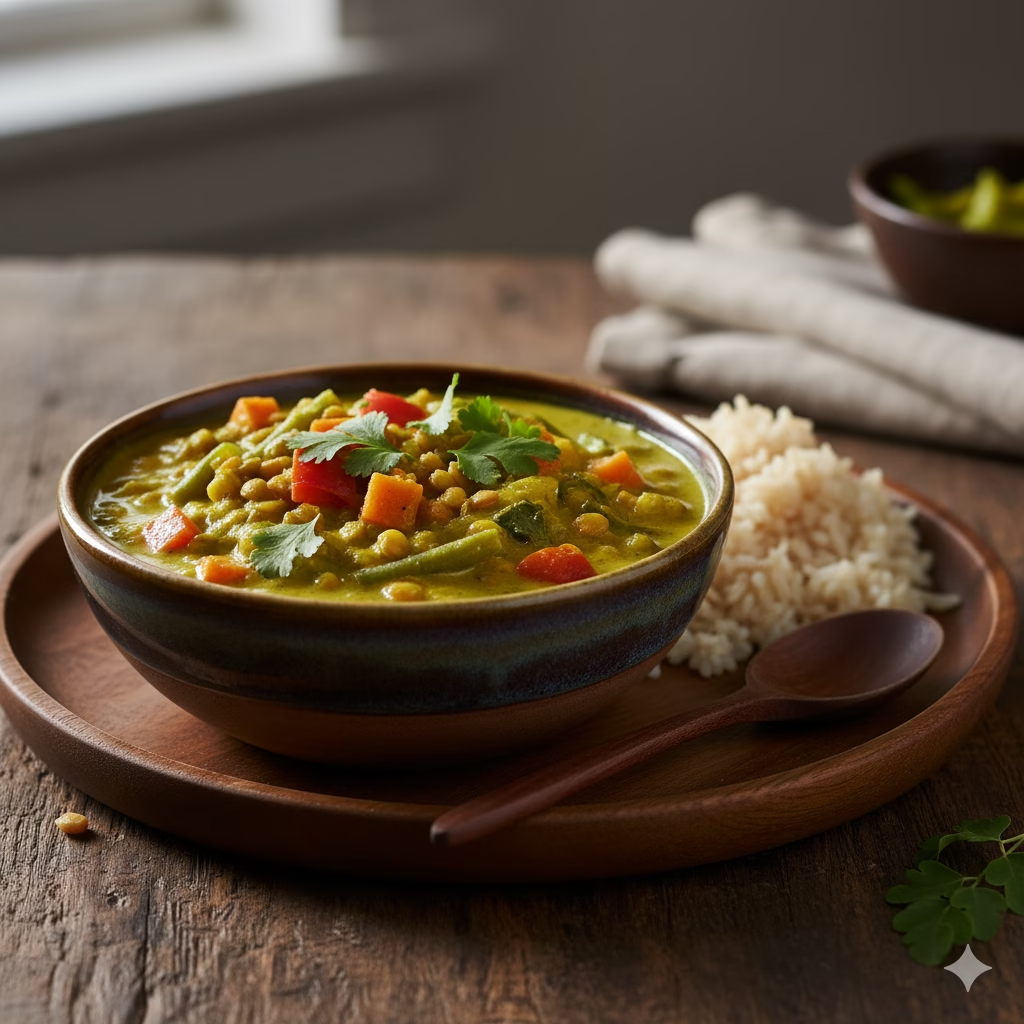
The Nutritional Powerhouse: Why Moringa Matters
Besides its great vitamin and mineral content, moringa is also a key source of strong antioxidants. These include compounds like quercetin, chlorogenic acid, and beta-carotene. These compounds do a very important job in the body: they help fight oxidative stress, lower inflammation, and protect cells from damage. This protection is vital for keeping your skin healthy, supporting a strong heart, and possibly lowering the risk of long-term diseases. Adding moringa to your routine is an easy, powerful step to give your body the defense it needs to feel its best.
What makes moringa so special is how easy it is to use and how adaptable it is. You can find it in different forms, like powder, capsules, or fresh leaves, so it fits perfectly into almost any meal or diet. Whether you cook often or are new to the kitchen, boosting your meals with moringa is simple and rewarding. It has a gentle, earthy flavor that works well in both savory and sweet dishes. This means you can add it to everything from a quick smoothie to a rich dinner.
This guide will show you 11 easy and tasty ways to use moringa every day. From quick breakfast additions to filling dinner recipes, we’ll share creative ideas and simple tips. Get ready to see how the “Miracle Tree” can improve your health, make your meals more exciting, and become a key part of your wellness journey.
11 Everyday Uses For Moringa: Boosting Your Meals
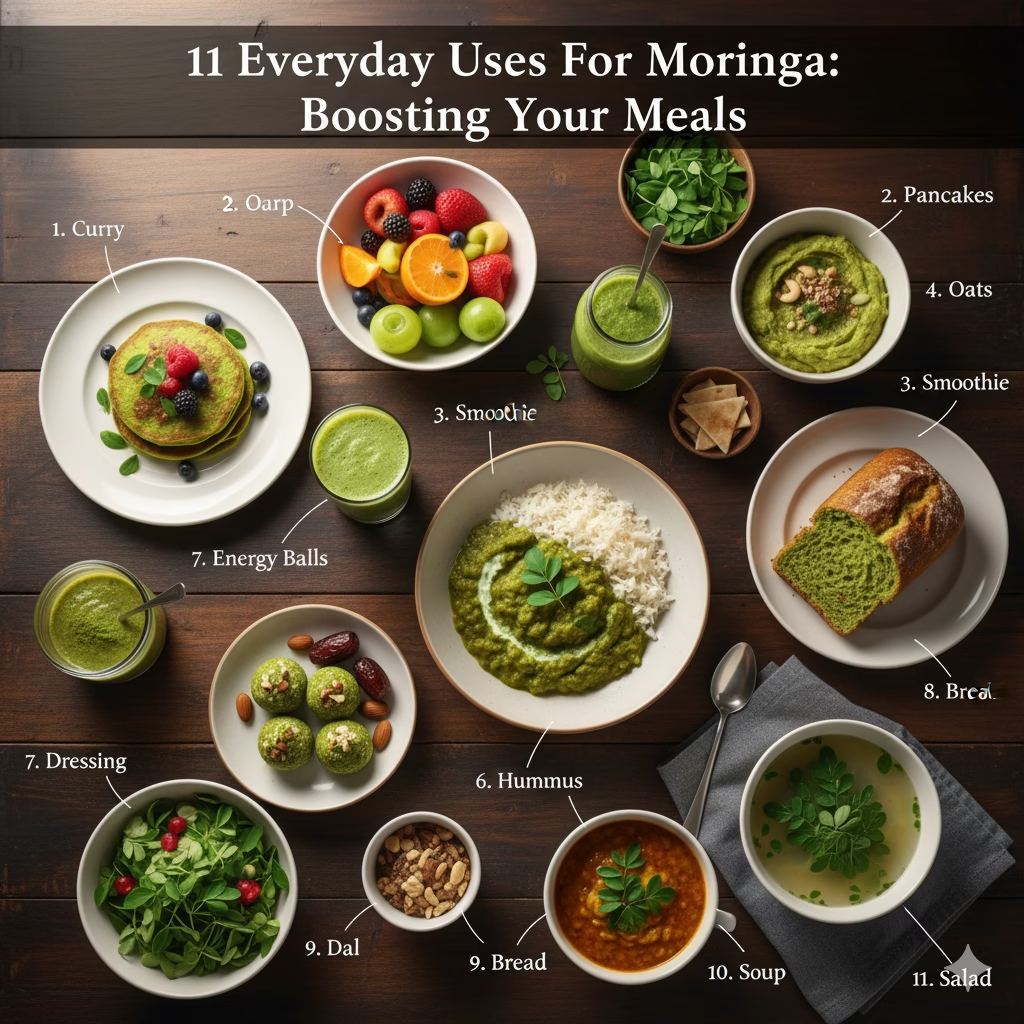
Here are 11 great ways to add moringa to your daily food and get all its amazing benefits:
- Soups and Stews: Just stir one spoonful of moringa powder into your soups or stews right before they finish cooking. For a smoother soup, mix the powder with a little bit of cold liquid (water or broth) first, then pour it in. This helps the powder mix in well without clumping up.
- Baked Goods: Add moringa powder to the batter when you bake muffins, bread, pancakes, or cookies. Use 1 or 2 teaspoons per batch. It will make your treats more nutritious and give them a nice, natural green color.
- Breakfast Bowls: Sprinkle about a half to one teaspoon of moringa powder over your hot oats, cold cereal, muesli, or granola. Stir it in gently. It’s a quick and simple way to start your morning with a powerful boost of nutrients.
- Dips and Sauces: Mix moringa powder into popular dips like guacamole and hummus, or stir it into pesto or your favorite pasta sauces. It adds a subtle earthy taste and a lot of key nutrients to your snacks and toppings.
- Salad Dressings: Whisk a teaspoon of moringa powder into your homemade oil-and-vinegar dressings or creamy salad toppings. Make sure you mix it thoroughly so the dressing stays smooth. It’s an easy way to sneak extra vitamins into your fresh salads.
- Energy Balls: In a food processor, combine moringa powder with rolled oats, different nuts (like almonds or cashews), seeds (like chia or flax), and pitted dates. Blend until the mixture is sticky, then roll it into small, bite-sized balls. These are perfect, healthy, energy-boosting snacks for when you’re busy.
- Curries: Add moringa leaves (use them fresh or rehydrate dry ones) to your curries. They go wonderfully with ingredients like lentils and vegetables such as potatoes, spinach, and colorful bell peppers. To keep the leaves bright and their nutrients high, add them in the final moments of cooking.
- Stir-fries: Toss a handful of chopped fresh moringa leaves into your vegetable or protein stir-fry. Add them towards the end of the cooking process, just long enough for them to wilt slightly. This gives your meal a unique flavor and many health perks.
- Dal (Lentil) Dishes: In traditional Indian cooking, both fresh moringa leaves and the drumstick pods are often added to dal (lentil stews). This boosts both the flavor and makes the dish much more wholesome and nutritious.
- Nutrient-Rich Soups: Use fresh moringa leaves generously in light vegetable broths or in classic recipes, such as chicken tinola. The leaves fill the soup with a delicate, green flavor and a great mix of vitamins.
- Fresh Salads: Give your usual salad a healthy upgrade by adding fresh moringa leaves to your mix of greens. Their mild, slightly peppery flavor works nicely with other salad ingredients, turning a simple dish into a nutritional meal.
Featured Recipe: Vibrant Moringa & Vegetable Power Curry
This easy-to-make and filling curry is a wonderful way to add a good amount of moringa to your diet, along with plenty of fresh vegetables and great spices.
A Wholesome Meal: The Power of Moringa in Curry
This Vibrant Moringa & Vegetable Power Curry is made to be both tasty and packed with nutrients. By adding moringa, either as fresh leaves or powder, you greatly increase the vitamins, minerals, and antioxidants in the meal. It’s the perfect way to enjoy a warm, comforting dish that actively supports your body’s health.
Time to Prepare: 20 minutes
Time to Cook/Blend: 30-35 minutes
Servings: 4-6
Equipment:
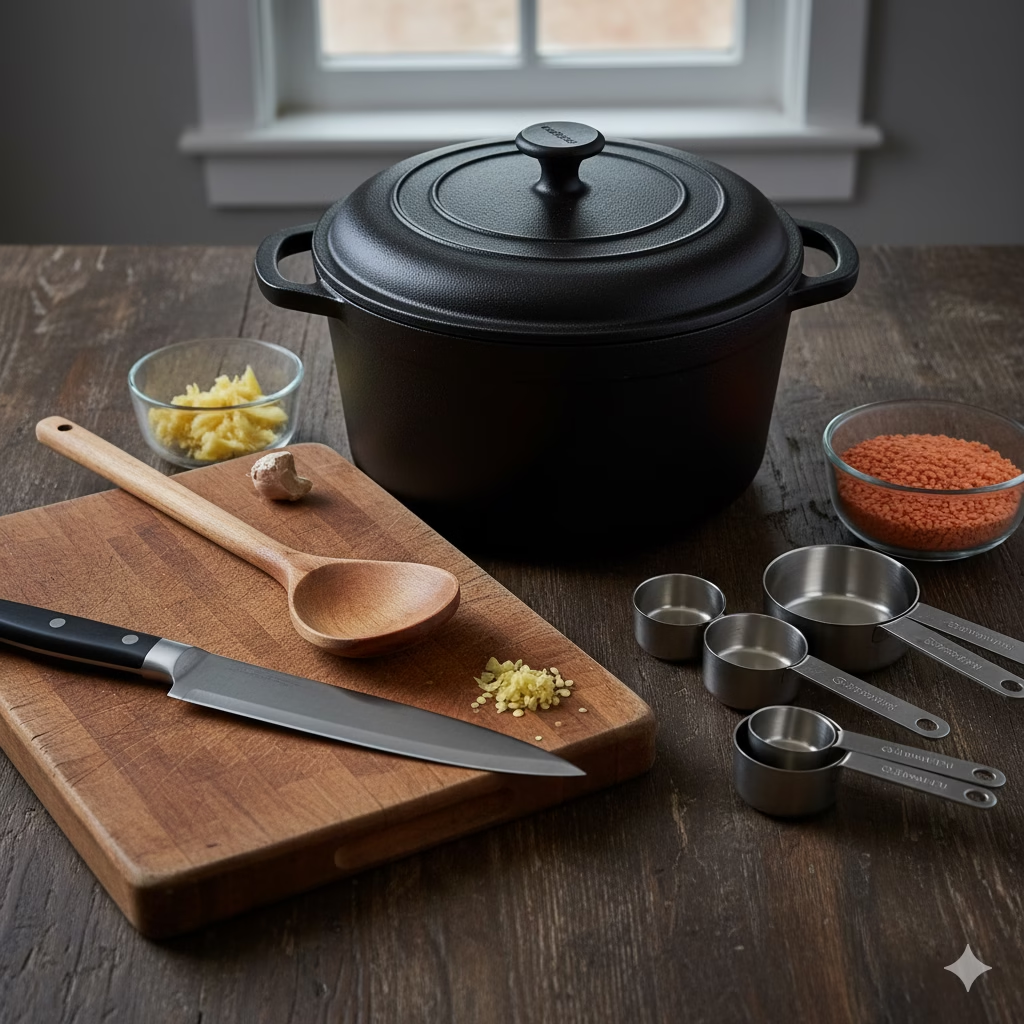
- Large pot or Dutch oven
- Cutting board
- Sharp kitchen knife
- Measuring cups and spoons
| Nutritional Information (per serving, approximate) | Value |
| Calories | 350-400 kcal |
| Protein | 15-20g |
| Fat | 12-15g (healthy fats from coconut milk) |
| Carbohydrates | 40-50g |
| Fiber | 10-12g |
| Excellent source of | Vitamin A, Vitamin C, Calcium, Iron |
Ingredients for Your Power Curry
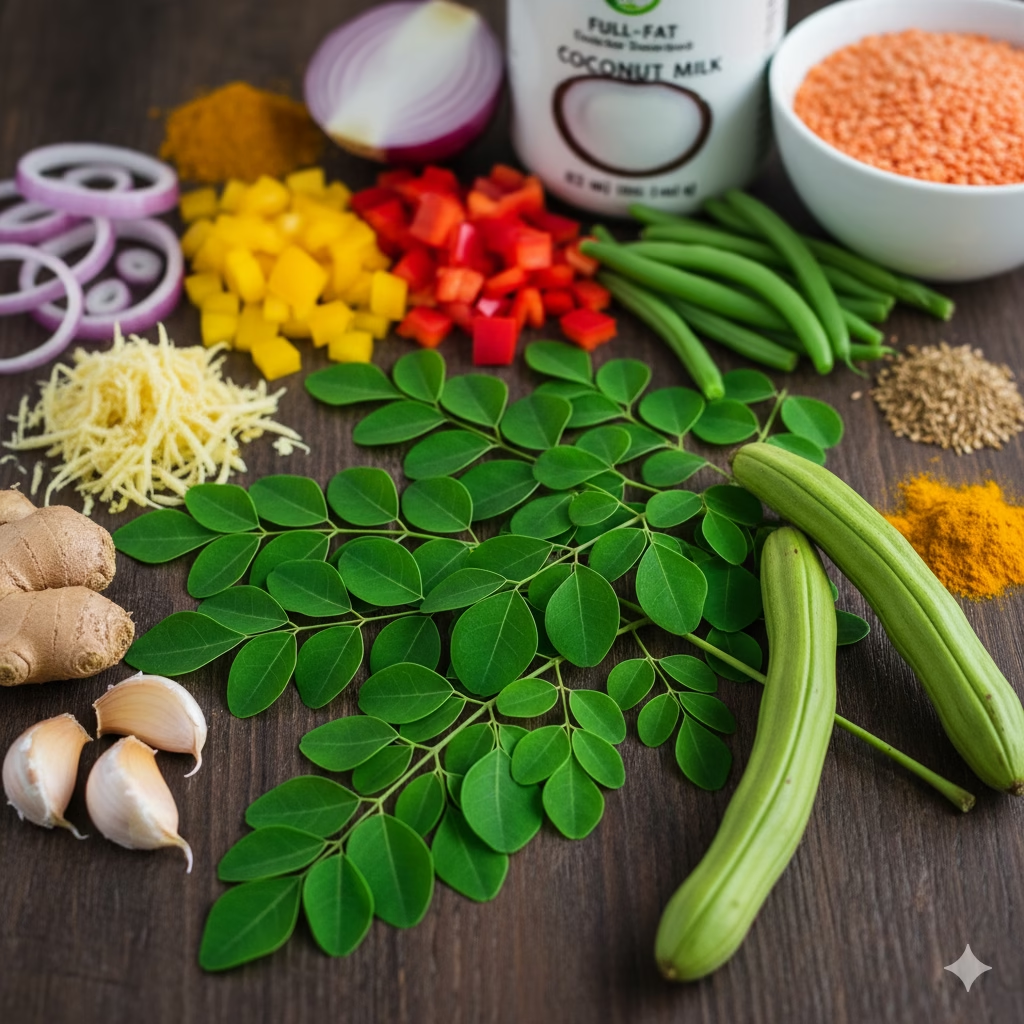
- 1 tablespoon coconut oil or olive oil
- 1 large onion, chopped finely
- 3 cloves of garlic, minced (crushed very finely)
- 1 inch of fresh ginger, grated
- A teaspoon turmeric powder
- 1 teaspoon cumin powder
- 1 teaspoon coriander powder
- ½ teaspoon red chili powder (you can use more or less to control the heat)
- 1 (14.5 ounce) can diced tomatoes, with the liquid
- 1 (13.5 ounce) can full-fat coconut milk
- A cup vegetable broth
- 1 cup chopped carrots
- A cup chopped bell peppers (use red, yellow, or orange for color)
- 1 cup green beans, trimmed and cut in half
- ½ cup red lentils, rinsed well under cold water
- 2 cups fresh moringa leaves, removed from the stems (or 2 tablespoons moringa powder)
- Salt and black pepper to taste
- Fresh cilantro, chopped, for a final garnish
- Cooked brown rice or quinoa, for serving
Step-by-Step Instructions: Crafting a Healthy Moringa Dish
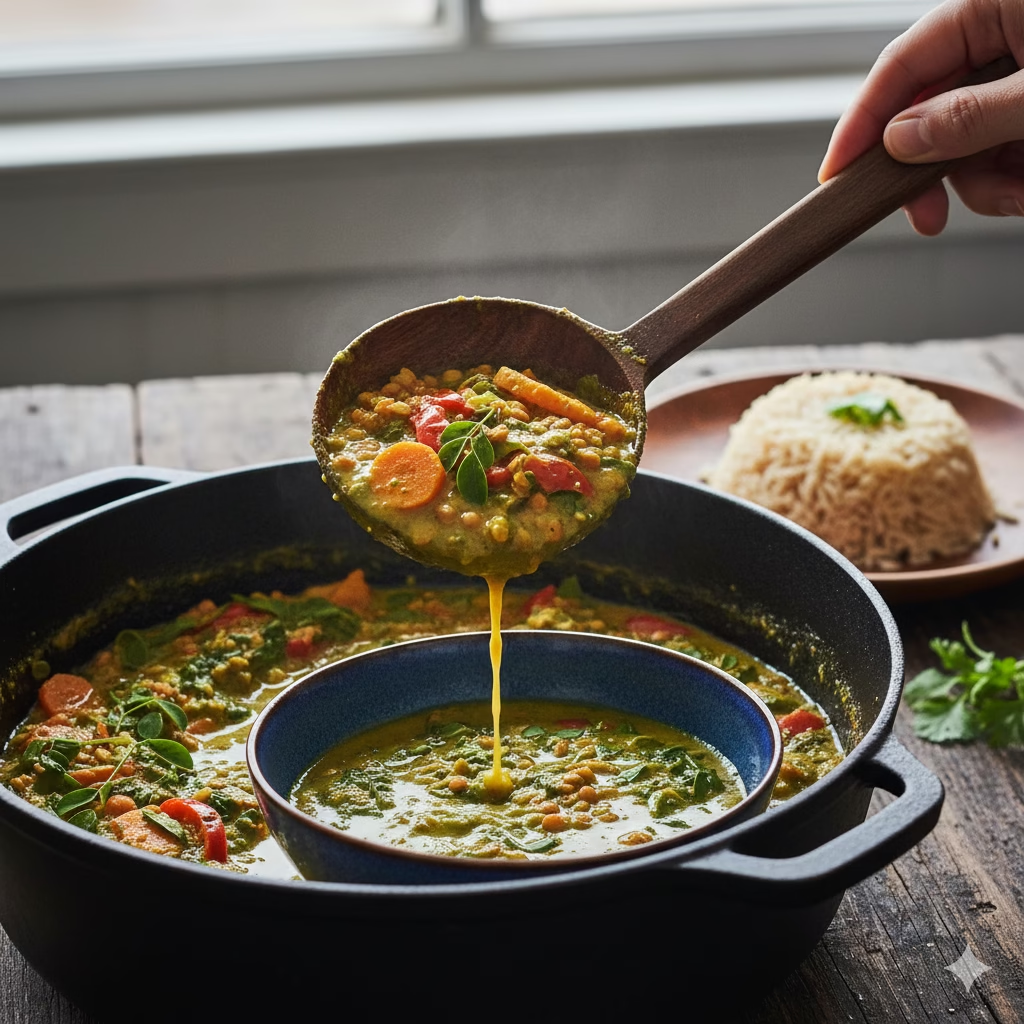
Start the Base: Put your large pot or Dutch oven on the stove over medium heat. Add the coconut oil or olive oil. Once the oil is hot and ready, add your chopped onion. Cook the onion for about 5 to 7 minutes, stirring gently until it looks soft and clear. This step makes a flavorful foundation for your curry.
Add Garlic, Ginger, and Spices: Stir in the minced garlic and grated ginger. Cook them for another 1 to 2 minutes until they smell very fragrant. Be careful not to burn the garlic! Next, add the turmeric, cumin, coriander, and red chili powders. Stir everything constantly for about 30 seconds to a minute. This step toasts the spices, making their flavor much richer.
Build the Sauce: Pour in the can of diced tomatoes (liquid and all). Stir well, making sure to scrape up any bits that may have stuck to the bottom of the pot. Let this mixture gently bubble for about 5 minutes. This lets the tomatoes soften and the flavors blend nicely.
Introduce Liquids and Vegetables: Stir in the full-fat coconut milk and the vegetable broth. Mix everything well. Now, add the rinsed red lentils, the chopped carrots, bell peppers, and green beans. Stir to spread the vegetables and lentils evenly through the liquid.
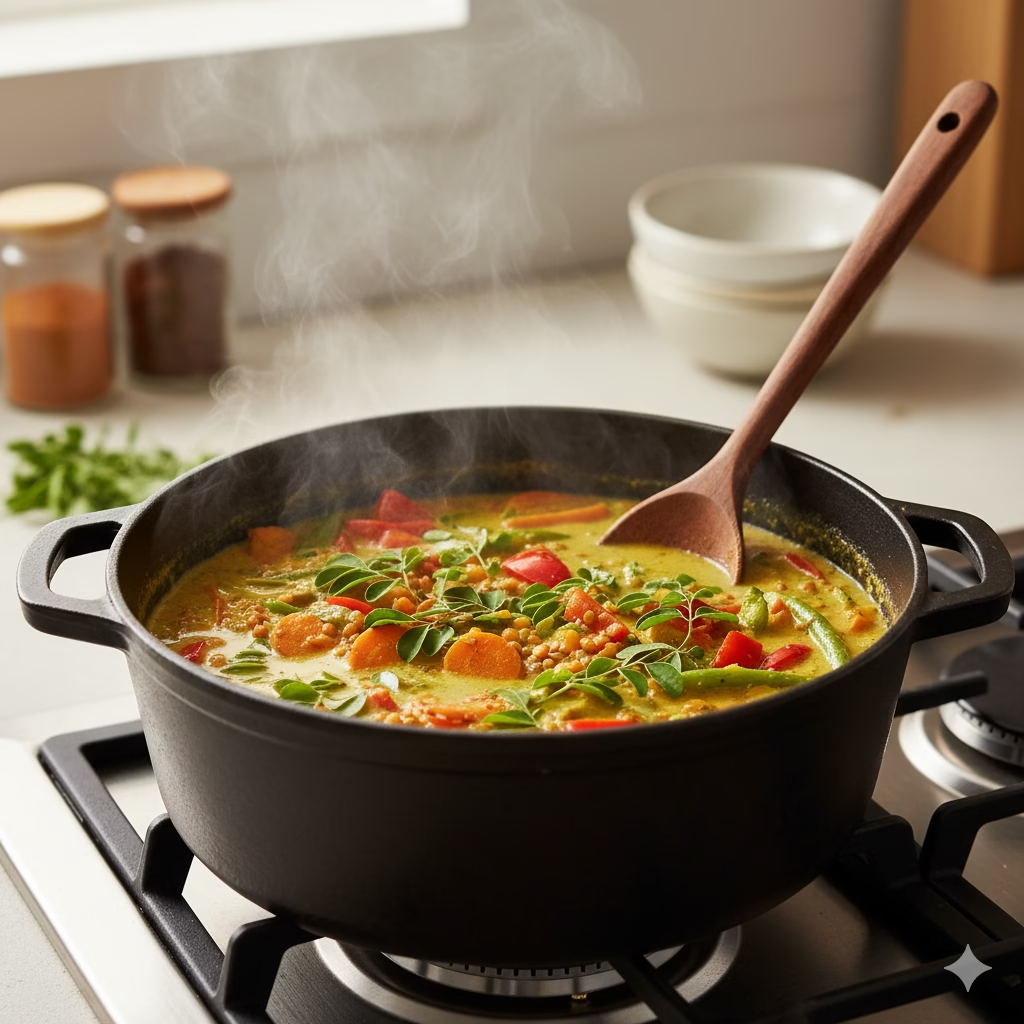
Simmer Until Tender: Bring the entire mixture up to a boil, then quickly turn the heat down to low. Cover the pot with a lid. Let the curry simmer softly for 20 to 25 minutes. You’ll know it’s ready when the lentils are soft and the vegetables are tender but not mushy. Stir the pot every now and then so nothing sticks to the bottom.
Stir in the Moringa: If you are using fresh leaves, stir them into the curry during the last 5 minutes of cooking. Cook just until they wilt and turn bright green. If you are using moringa powder, stir in the 2 tablespoons during the last minute of cooking, making sure it dissolves completely. Don’t overcook the moringa so it keeps most of its nutrients.
Finish and Serve: Taste your curry and add salt and black pepper until the flavor is perfect for you. Scoop the hot curry into bowls. Garnish with a sprinkle of fresh, chopped cilantro. Serve it right away with a side of cooked brown rice or quinoa for a satisfying and complete healthy meal.
Alternative Cooking Methods:
- Slow Cooker: Sauté the onions, garlic, and ginger as described in steps 1 and 2 in a separate pan. Move the sautéed mixture and all the other ingredients (except fresh moringa leaves) into your slow cooker. Cook on low for 6-8 hours or on high for 3-4 hours. The lentils and vegetables should be tender. If using fresh moringa leaves, stir them in for the last 30 minutes of cooking.
- Pressure Cooker/Instant Pot: Use the ‘Sauté’ function on your pressure cooker for steps 1 and 2. Then, add the tomatoes, coconut milk, broth, lentils, carrots, bell peppers, and green beans. Stir well. Close the lid, set the valve to seal, and pressure cook on ‘Manual’ or ‘High Pressure’ for 8-10 minutes. Let the pressure release naturally for 5 minutes, then quick-release the rest. Stir in the moringa leaves or powder as in step 6.
Boosting Your Health with Moringa

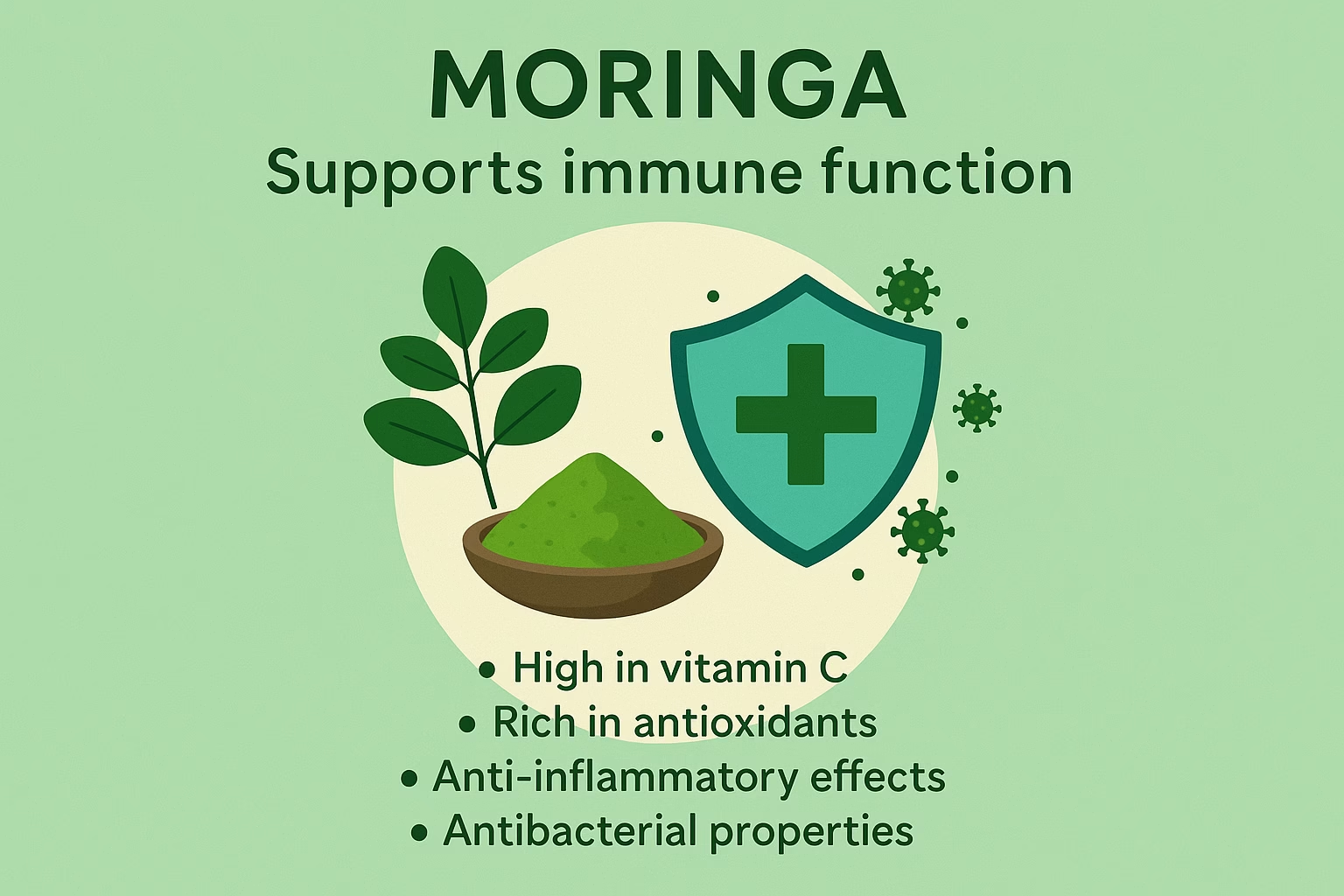
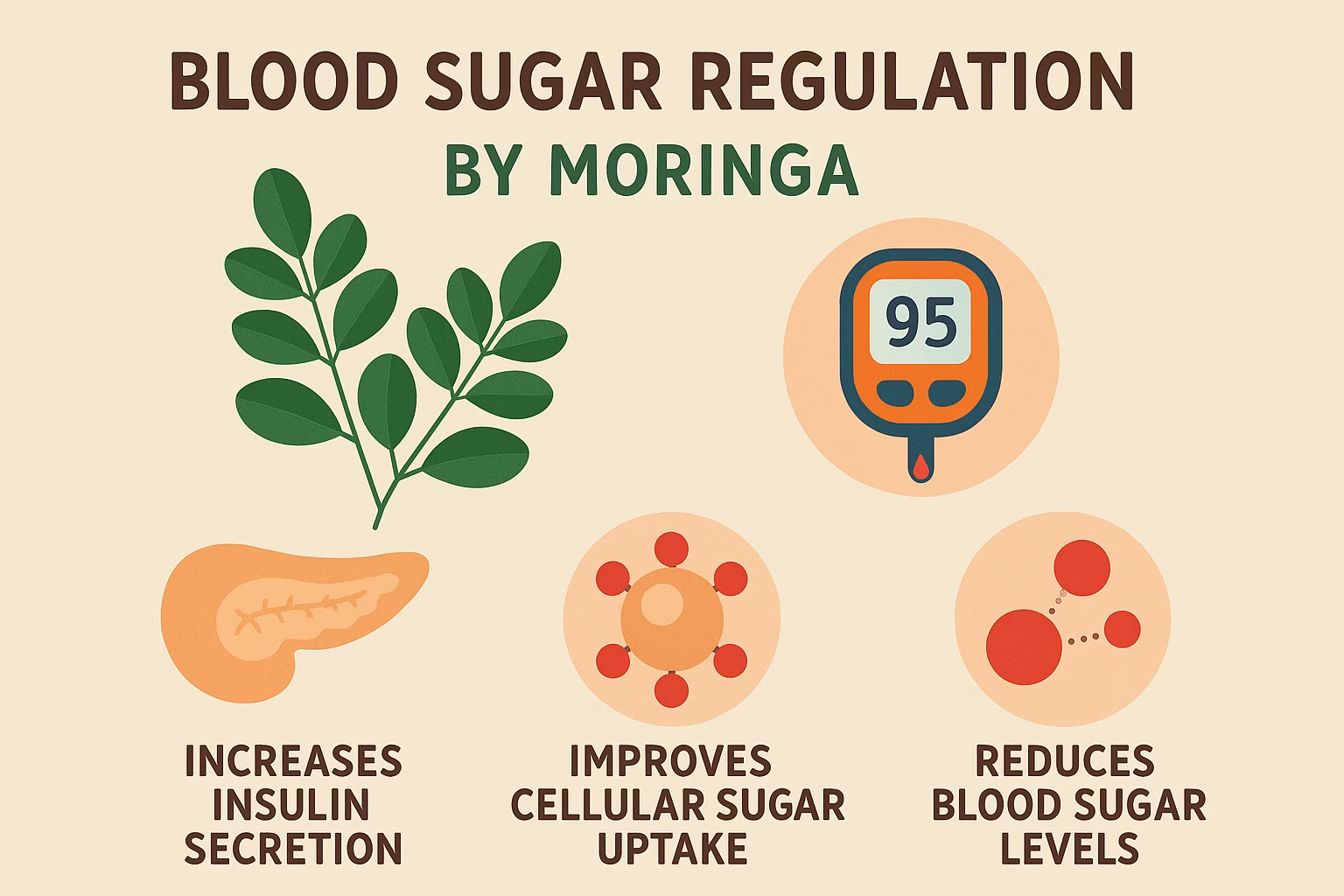
Adding moringa to your food, like in this hearty curry, gives you many wonderful health perks:
- Rich in Key Nutrients: Moringa is a superfood full of vitamins like A, C, and E, plus essential minerals like calcium, potassium, and iron. This curry helps you easily get the nutrients you need daily.
- Powerful Antioxidants: The strong antioxidants in moringa help fight damaging particles called free radicals. This lowers stress in the body and helps reduce inflammation.
- Supports Good Digestion: Both moringa and the high-fiber vegetables in this curry help keep your digestive system running smoothly, leading to a happier, balanced gut.
- Strengthens Immunity: With its high levels of Vitamin C and other helpful compounds, moringa helps make your body’s defense system stronger, helping you fight off sickness.
- Natural Anti-inflammatory: It is known for its ability to lower inflammation throughout the body. Eating it often can help soothe minor aches and pains.
- Increases Energy: The mix of iron and B vitamins in moringa supports your body’s energy production. This can help you feel less tired and more lively overall.
Recipe Variations: Customize Your Dish
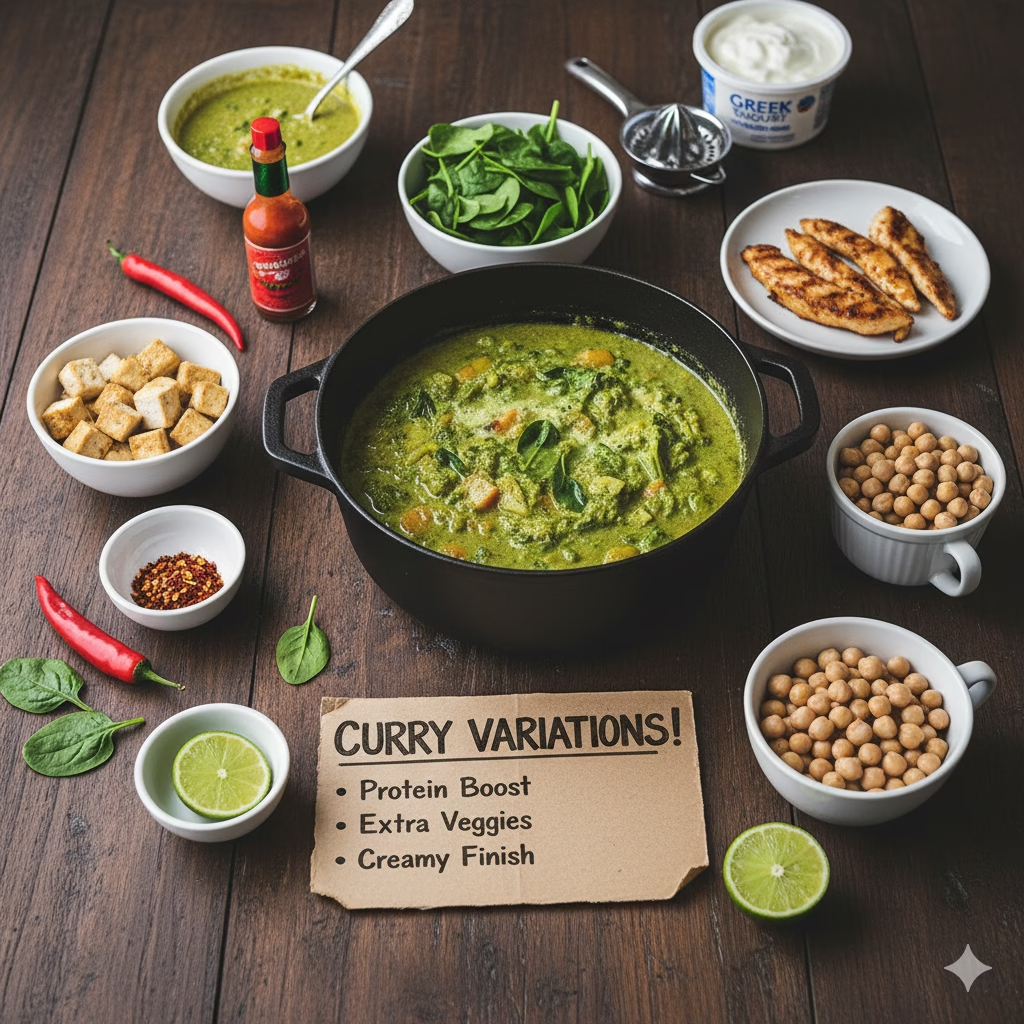
Here are some easy ways to change up your curry based on your personal taste or dietary needs:
| Variation | Description |
| Protein Boost | Add 1 cup of cubed, pan-fried firm tofu, chickpeas, or cooked shredded chicken along with the lentils for a meal richer in protein. |
| Spice Level Control | Easily adjust the red chili powder or add a whole, small green chili for more heat. To reduce the spice, just leave out the chili powder. |
| Different Vegetables | Feel free to swap the vegetables! Try adding chopped zucchini, broccoli florets, or chunks of sweet potato. Just be sure to add the firmer veggies earlier in the cooking time. |
| Creamier Texture | For a richer, smoother curry, carefully use an immersion blender to blend a small portion of the cooked curry before adding the moringa. |
| Add a Tangy Flavor | A quick squeeze of fresh lime or lemon juice right before serving makes the flavors brighter and adds a nice zest. |
Final Thoughts: Embrace the Moringa Lifestyle

Moringa is a true gift from nature, giving you a huge amount of nutrition in a package that’s easy to use. Whether you stir it into your morning cereal or cook it into a warm curry, adding moringa to your daily meals is simple and helpful. By trying these 11 everyday uses, you are doing more than just adding an ingredient; you are investing in a healthier, more energetic you. Let the “Miracle Tree” become a key part of your wellness plan. Try these ideas, find the ways you love to enjoy moringa, and feel the wonderful health changes it can bring.
Frequently Asked Questions (FAQs)
Q1: What does moringa taste like, and will it ruin my food?
A1: It has a light, earthy, and slightly peppery taste, similar to spinach or arugula. The flavor is usually very mild, especially when you use the powder or cook the fresh leaves into a recipe. When mixed into complex dishes like this curry or a smoothie, the moringa flavor blends in nicely and won’t overpower the meal.
Q2: Should I use fresh leaves or moringa powder?
A2: Both forms are highly nutritious! Fresh leaves are great when you want texture, such as in salads or stir-fries. The powder, made from dried leaves, is more concentrated and super easy to add to liquids, baked goods, and sauces. Which one is best simply depends on the specific recipe you are making.
Q3: Can moringa help with blood sugar and inflammation?
A3: Yes, studies suggest that it may help manage blood sugar levels and improve insulin sensitivity. It also has strong anti-inflammatory properties, thanks to its high antioxidant content, which can help reduce inflammation throughout the body. It’s always best to speak with your doctor before using it as a treatment for any condition.
References
- Healthline – 6 Science-Based Health Benefits of Moringa
- Medicalnewstoday – Moringa: 15 possible benefits
- WebMD – Health Benefits of Moringa
Recent Posts
